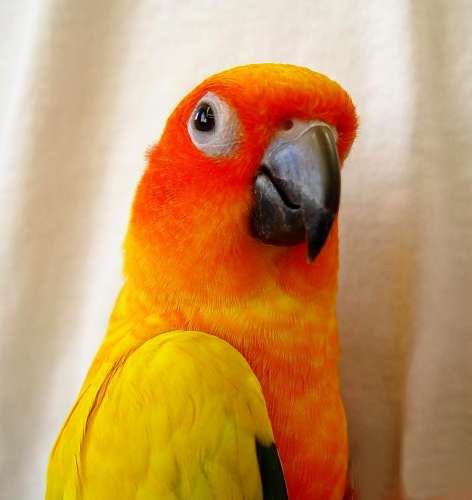This past week has left me, on at
least three separate occasions, wondering what it is I actually do for a living
and how I came to do it. It’s not as simple as it sounds to answer the question
“what do you do?” That has been the age-old mark of the difference between the
old country and the new, that Americans leap to wanting to know how you earn
your money while Europeans meander around your interests first. This is a stereotype
that is slowly fading away and leaving behind a new and much more unpleasant
taste.
Why is it
difficult to know what you do? If you are a fitness instructor, you instruct
people in fitness. If you are a financial investment adviser, you advise on
finances. If you are a programmer – well you program; and so on. But these aren't really descriptions of what you really do – they are titles of categories within disciplines. A fitness instructor may work only with people engaged in triathlons or other
competitions, a financial investment adviser may focus on retirement funds or start-up
capital. These are called the specializations of the general category – within
the specializations there are skills. One programmer, who only programs in
Java, may excel at creating debugging programs -a skill within a
specialization.
The term “generalist” is becoming
popular again. Sadly, it is being applied by people willy-nilly to those who
are little more than specialists or dilettantes. A generalist is someone who
has comprehensive knowledge in several unrelated fields of five or more disciplines
along with special skills associated with each and can inter-relate the areas
of disciplines and skills through critical problem solving that uses a holistic
language of contexts to preserve the integrity of the problem without losing
awareness of its broader impact. One of the best ways I have heard them
described is that no matter where you plunk a generalist down, they will do
well and also find a new way of doing things while realizing how to do something better somewhere else totally not related. The term generalist used to be interchangeable
with polymath with the polymath just being the generalist on steroids and often
hitting genius level in their inventions across several disciplines.
A specialist is someone who has knowledge
related to one to five disciplines that are related and has advanced skills in
areas of these disciplines. They can do much within their general field and
have critical problem solving skills that relate to within that field. They can
only apply their skills to other fields by forcing an understanding of the
unrelated problem into familiar terms first.
A dilettante is someone who has
broad knowledge of many areas but little applicable skill in any (beyond a beginner
to intermediate level). They know a lot about many things but can do little in
any and lack the capacity for practical invention or critical problem solving.
The confusion that is happening
today is that someone (a specialist) who has experience in one to five related areas, and the skills within their sub-specialties is being called
a Generalist.
Here is a list of commonly
accepted generalists/polymaths:
Leonardo da Vinci
Thomas Edison
Nikolai Tesla
Benjamin Franklin
GK Chesterton
Michelangelo
Galileo
Paolo Sarpi
Copernicus
Francis Bacon
Servetus
Ibn al-Haytham
Ibn Sina
Omar Khayam
Hildegard of Bingen
Trotula of Salerno
Maria Gaetana Agnesi
One of the common attributes of a
generalist/polymath is they have a highly developed skill and talent within an
art form (painting, writing, music etc.). They also tend to excel and work
within physical science, chemical science, sociology, psychology, economics,
engineering, manufacturing, philosophy and religion all at once while setting
poems they wrote to music so people who can’t keep up (and don’t need to) can
dance along with them. The other common attribute of a generalist is all of
their knowledge results in the production of something. They are often accused
of not finishing things (da Vinci) but that stems from their
discovery that the idea leads elsewhere before it can be finished. Leaving
something undone because you are gaining the skill to do it is much different
than dropping an idea or just not finishing what you have started.
Recently, a friend of mine went
to see a lecture by someone who billed themselves as a “generalist” and charged
quite a bit of money. It became quickly apparent that this person was an “opportunist.”
Is a generalist better than a
specialist? No, the world needs both. The generalist can see how disparate
things and influences relate and can allow for this understanding to be fluid
so they can spot when they do relate and when they cease to relate. For
example, it is the generalist who will see that clouds in the sky and seeds in
the ground relate, but only when the clouds bring rain and the seeds are in the
right temperature and age to grow. From there they invent harvest times and
train schedules to coordinate every aspect of the system of economy. It is the
specialist who then discovers what depth the seed must be planted and how much
water they need to grow best. Without each other, neither can do much.
The dilettante – is not worth
much at all except for one thing common to all dilettantes, they tend to be very good at spotting what is new and claiming expertise in things that don't require any work or study at all (think Life Coach). This is essential for the specialist and generalist as it serves to bring in new ideas from random places. Don't get me wrong, life coaches can be very helpful, they are what would be called a best friend if you weren't paying for the right to talk to them.
GK Chesterton warned that the
downfall of the Western culture and economy would come when we began to have
more specialists than generalists. ‘Begin with a general education,’ he never
actually said, ‘so that some may find their specialty and others may be allowed
to continue to go broadly into what makes the world work.’ We are rife with
specialists now who take advice from dilettantes.
What happened to the generalist?
That is easy, the generalist was
killed off with the advent of the business plan and the social integration of
the question, “How are you going to make a living doing that?”
It isn't law and regulation that
has choked ingenuity and innovation, but the expectation that you can lay out on a piece of paper
a surety for investors based upon something that does not exist. It is the
investor that has killed the economy, not the government. If you read most
regulations carefully there is ample room to invent and get things going, but
without the money from an investor, there is little you can do. The investor’s
law is that you must prove a return that will benefit them.
I can – as an experienced writer –
prove anything to you.
It doesn't mean it is real.
I can find studies to cite and
all sorts of statistics, but none of them are anything but statements of
convenience. If I have an idea and am presenting it to a potential investor one
way and another investor promises more capital only if it does the exact
opposite – I can take the studies and statistics and present a different
interpretation of them to suit the new person’s
needs.
This is called lying.
But we have evolved into a
culture of lies because we have lost our generalist vision. Our Ben Franklins have gone missing. There is no way
that one thing can solve anything, or even be the “key” if you really
understand how things work in life. Everything is a bit of the puzzle but
nothing comes with guarantees. What does happen is a trend. Things will trend
towards one result or the other. But that is not a surety for trends most often
are rooted in emotional behavior.
This is where art comes in.
In order to control the direction
of our trend we have to convince our emotional selves that there is a predictable
outcome. Why? Because if we believe we know what to expect, even if it is horrible, we
tend not to panic. Not only do we not panic, we spin a fantasy that makes even the most horrible thing a blessing in disguise. We create images and beliefs surrounding things that we want
to be one way (and not another) and use them to bolster our bias to make the
world work for us. We paint pictures, make movies, write poems, sing songs that
support a context in which everything that happens is understood (even if the
context is that nothing can be understood) in order to believe that there is
one key that will take all the questions and insecurity away and we won’t have to worry about
anything anymore.
Therefore we pursue our heavens,
nirvanas, pure lands, aliens, angels and self-awareness with a passion that is usually
reserved for someone who is starving pursuing food.
We reject any suggestions that
what we believe is the way to go may also mean many other things. If what we
cling to can also be something else for another, then it has betrayed us
(emotional mind).
So how do we get back to a
cultural way of thinking that allows for possibilities and recognizes
accountability and impact? Where we ever there?
Perhaps the question more important to begin with is what do you do for a living? Figure out what it is you do now for a living and discover
what it means about who you are in life. We have who we believe we are, who we
would like to be, who we fear being and we spend tons of time and money examining
all of those – but rarely do we closely examine the lives we live for their
reflection of who we are in the present.
I have almost named one of the
little finches. The white one, who I was so concerned about before, is now
referred to as “the little ass.” He is a bully and a jackass to the point of
ripping feathers out of the others to keep them away from the one treat stick
he prefers. I say that, and then the next minute they are all getting along
swimmingly.













